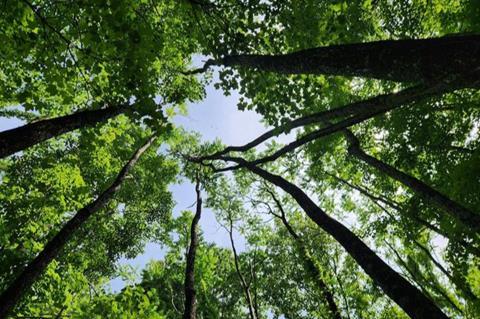The tree-of-heaven is not so heavenly. The devilishly invasive plant from Asia grows quickly in natural areas and backyards in the US, taking over habitats intended for native species. Its ecosystem impacts go far beyond that of just plants.

The tree-of-heaven is the native host to the invasive and destructive spotted lanternfly, a visually striking insect that colonizes quickly and destroys just as fast.
READ MORE: Phages could replace harmful pesticides with a cleaner, greener alternative
READ MORE: Rhizobacteria identified to combat striga and boost sorghum yields in Ethiopia
Researchers in the College of Natural Resources and Environment and the College of Agriculture and Life Sciences at Virginia Tech are examining if a natural fungus that kills the tree-of-heaven could be spread to other trees-of-heaven by the spotted lanternfly.
Forest pathologist Carrie Fearer, assistant professor in the College of Natural Resources and Environment, is leading the nearly $900,000 grant from the U.S. Department of Agriculture’s Agricultural Research Service Areawide Pest Management Program, which is a collaboration with Penn State, Rutgers University, the University of Georgia, and the University of Minnesota.
Native fungus as biocontrol
The goal of the grant is to develop a native fungus as a biocontrol for the tree-of-heaven. Researchers are investigating whether the spotted lanternfly could help transmit the fungus from tree to tree, reducing the need for human intervention. The team also is testing other pathogens and pests that could control the tree-of-heaven and prevent the spotted lanternfly from spreading into vineyards.
“The ideal scenario is that humans inoculate a tree with the fungus, and the spotted lanternfly, through its cluster feeding, picks up the fungus,” Fearer said. “Then the fungus could be transmitted to another healthy tree-of-heaven through the spotted lanternfly’s feeding or by spores on the insect’s body.”
By reducing the food source of the spotted lanternfly, this project could also help reduce the insect’s population as well.
Research on the project from the College of Agriculture and Life Sciences are Scott Salom, Thomas Kuhar, Doug Pfeiffer, Stefan Jaronski, and Ben Aigner. Drew Harner of the Alson H. Smith Jr. Agricultural Research and Extension Center, is also part of the project.







No comments yet